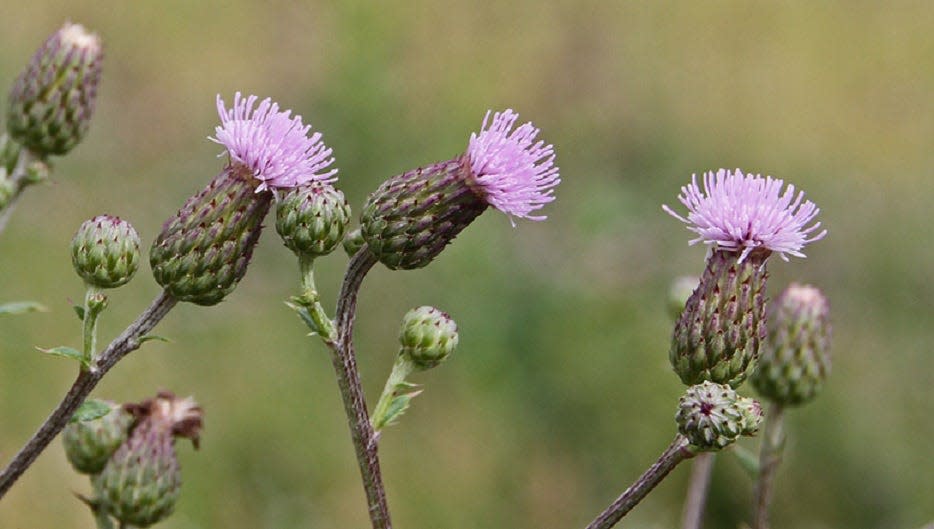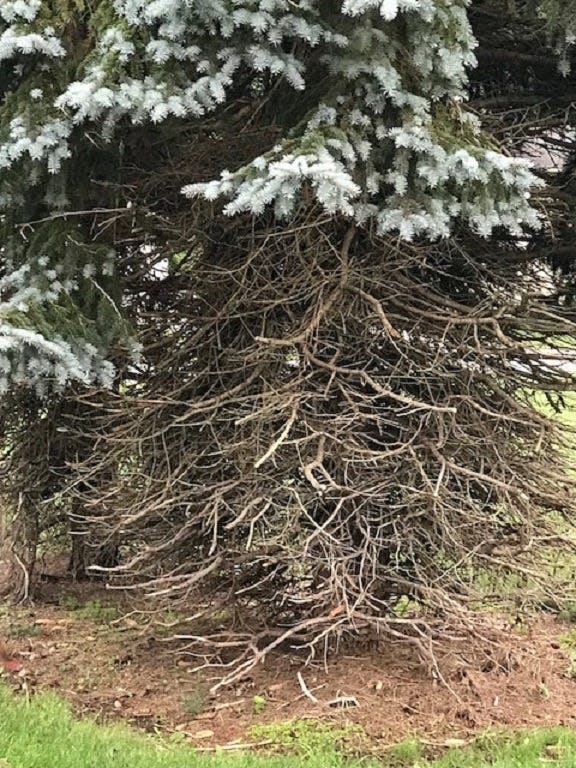Ask the Expert: How do I control pesky thistle in my flower beds?

Editor’s note: Throughout the growing season, Mike Hogan, OSU Extension educator for Agriculture and Natural Resources in Franklin County, will answer gardening and home landscape questions submitted by Dispatch readers. Send your questions to hogan.1@osu.edu.
Q: We recently moved to a new home and have inherited flower beds which are inundated with thistle. We have weeded these beds several times, but more thistle just pops up. How can we control this dreaded weed?
A: Canada thistle is particularly difficult to control because of the extensive root and underground stem system of thistle, which can be 3 feet below ground. Each time you pull new shoots that pop up, the underground stems form new above-ground shoots. Each new shoot that comes out of the ground can produce up to 40 flower heads and 1,500 seeds in just one growing season.
The key to controlling this weed is persistence. You will need to outlast the root system to be successful. An effective control strategy is to hand-pull large plants and treat new shoots while they are small with a systemic herbicide. Monitor your beds every day for small new shoots and apply the herbicide to each new shoot. You will need to apply the herbicide to each new shoot that pops up. Whenever you use an herbicide, be sure to read and follow all label directions and wear appropriate personal protective equipment.
Ask the Expert: How do you protect your tulips from pests?
There are some organic herbicides that can be applied to thistle, but they tend to burn the above-ground shoots and do not kill the root system. If you use an organic herbicide on thistle, you will have to make repeated applications until you deplete the root’s reserves. This can take more than one growing season. Cultivation and hand-pulling of this weed without application of an herbicide will provide minimal control. To read more about this plant and control options visit: go.osu.edu/canadathistle.

Q: The lower branches of a beautiful Colorado blue spruce in our front yard have died over the past two seasons. The needles turned a purple color and then a bright orange before they fell from the branches. Should we have the tree cut down?
A: From the description of the symptoms, the culprit sounds like a needle cast disease called Rhizosphaera. This disease causes needles to turn brown or — in the case of the Colorado blue spruce — a purplish-brown and fall from the tree prematurely. Needles of any age and on any part of the tree may be infected, but the disease often starts on year-old or older needles on the lower branches of the tree, attacking several branches at one time. Lower branches are commonly affected because the foliage is denser and shaded, receiving less air flow and holding moisture for longer periods of time compared to higher branches. If conditions are conducive in the following years, the disease will spread within the tree from the bottom up and inside out.
Infected needles drop between late spring and autumn, 12-15 months after infection. Spruce trees are not able to form new needles where the old ones dropped. As a result, bare areas develop on the tree, reducing its ornamental value and overall health. Branches may begin to die after 3-4 years of early needle loss. In severe cases, the disease can kill entire trees.
Ask the Expert: What is the best way to control moss in your lawn?
To control spread of this disease, remove the affected lower branches and dispose of them in household trash. Remove dead needles from the ground beneath the tree and dispose of them as well. This will remove a potential source of inoculum of the pathogen and also improve airflow near the base of the tree. Be sure to disinfect all pruning tools after use.
The disease can be effectively controlled by applying fungicides containing chlorothalonil. New growth can be protected, and the tips of branches will continue to grow and mask the older, defoliated stems and branches if the disease is detected early. Older needles that are already infected may continue to be cast, thus it may take several years of treatment for the tree’s appearance to improve. More information about this disease can be found at: go.osu.edu/Rhizosphera.
This article originally appeared on The Columbus Dispatch: Ask the Expert: How to control thistle in your flower beds

